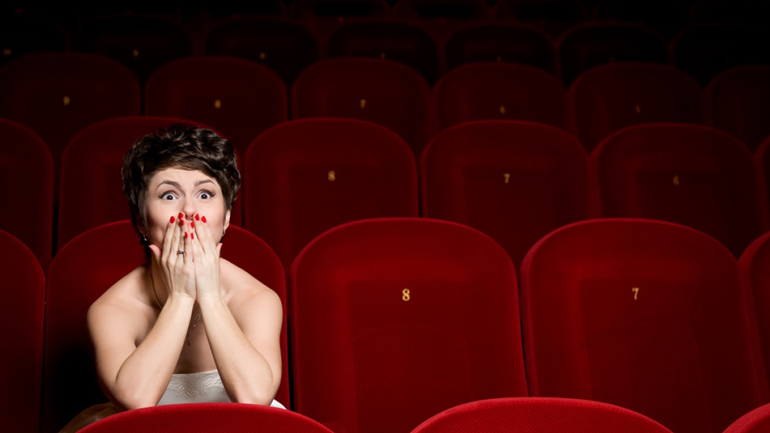When do I clap? Why is the timpani player smelling the drums? All your newbie symphony concert questions answered.

One of my favourite things to do is take a friend who is new to classical music to see an orchestra concert. Not only do they get to see a little bit of my world, but they also ask some great questions!
Question: Why are do the wind players stomp their feet, and the string players wave their bows?
These motions are how musicians onstage applaud with their hands full of instruments.
Question: Why aren’t there any saxophones?
The most commonly given reason for why saxophones are rarely used in orchestral pieces is because they were invented much later than the standard orchestra. This argument doesn’t hold up though, because tuba was invented around the same time and is now a staple instrument of the brass section.
Perhaps the tuba was able to secure a spot because no other wind instruments fill the role of a very low harmonic instrument, while horns, clarinets, oboes and bassoons play in a similar range to the saxophone and do a decent job covering melodies and counter melodies.
Some people contend that the overtones and sound colour of the saxophone don’t blend with the other woodwinds (whereas tuba is basically a really big French horn and blends easily with the rest of the brass). Some late romantic and modern composers do write for saxophone, but they use it specifically for its unique timbre.
At the end of the day, it seems that no one has a concrete reason for the saxophone’s omission. It may simply be one of those things that never caught on. For now, not enough pieces include saxophone to add it as a standard instrument, but who knows what the future holds.
Question: Why are those cellists standing while others are sitting?
The standing musicians are actually playing the double bass. It’s bigger and lower than the cello. They have to stand (or sit on tall stools) because the instrument is so big and that is the easiest way to play it.
Question: Why is the timpani player smelling the drums?
Timpani are unique because they can be tuned on the fly with the use of a pedal that’s usually not visible to the audience. In many pieces, the timpanist could have to play any number of different pitches. Changing the pitch of the timpani in the middle of a piece involves moving the pedal to tighten or loosen the drum head, but the musician has to listen to the drum to make sure that the new pitch is in tune. Because they can’t play the drum loudly during the music, they get really close to it to hear the new (quiet) pitch and make sure it’s in tune.
Question: Why can’t I clap yet?
Clapping between movements (or lack thereof) is often cited as the quintessential example of classical music snobbery intended to keep the uninitiated out. People who don’t know the appropriate times to clap are sometimes made to feel silly for clapping in the wrong place. Perhaps surprisingly, it is a relatively new custom to remain silent between movements. Up until the romantic period, it was not unusual to applaud during breaks in the music, in fact, it was rather expected. The romantic composers, however, began to view their symphonies more as unified works and discouraged the applause because it broke the spell created by the music before the end of the piece.
Think of a symphony as a novel: each movement is a chapter. Just as you don’t necessarily pause between each chapter in a book to appreciate the writer, composers aimed to maintain the continuity of their music by avoiding audience interruptions.
In modern times, most writers come out in favour of applauding between movements, especially if the piece was written before 1800. Unfortunately, most audiences are still very attached to the idea of not clapping until the very end of a multi-movement work, to the frustration of newcomers who aren’t aware of the custom. My opinion is if you are moved to the point where you want to communicate your appreciation – you should feel free to do so, but be aware that others seated near you might throw a scornful glance your way. If you’d like to play it safe, save your applause until the conductor turns around and the rest of the hall has started to clap.
*Click here for Part I*
#LUDWIGVAN
Want more updates on Toronto-centric classical music news and review before anyone else finds out? Get our exclusive newsletter here and follow us on Facebook for all the latest.
- FEATURE | How Classical Music Is Taking On Climate Change - February 11, 2020
- GUIDE | A Tour of Glenn Gould’s Toronto (Or, How I Visited Three Fran’s Locations In One Day) - January 21, 2020
- FEATURE | Classical Horoscopes: The Signs As Composers - January 4, 2020



